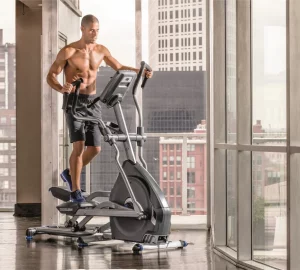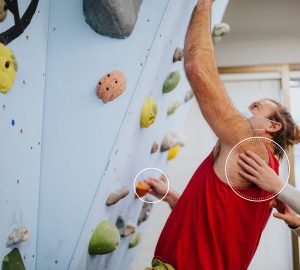One should never forget that thanks to the millennia of evolutionary processes (or God’s goodwill – to each his own) human organism developed into an exquisite, high-tech machine, designed to adapt to almost any environment to fulfill its life goal of procreation.
The ability to adapt – and consequent modification variability – currently serves as the basis of all physical training theories. If an organism undergoes any load, it responds by becoming stronger and fitter, prepared to overcome such load again, should the need arise.
However, the breakthroughs of modern medicine allow to exercise without relying only upon the empirical obvious but incorporate various physiological metrics gathered from the body into the training routine, creating an exercise program that is inherently explicitly suited for you. One such novel metric is Heart Rate Variability or, simpler, HRV.
Care to elaborate?
If you’re wondering what does HRV mean and have enough spare time and sufficient dedication, respectively, I will recommend you to check out this in-depth article regarding the topic. It is written by the specialists of Welltory – HRV biofeedback app and the most preferable on the market. But more on that later.
Anyway, I will provide the brief Q&A right here for those lacking in spare time and enthusiasm. Let’s get the show on the road!
What is heart rate variability?
Heart Rate Variability is the measure of the difference in time between heartbeats. Yeah, the interval between each heartbeat differs and is not perfectly equal, like a metronome.
What is good heart rate variability?
Unfortunately, no one can give a definite answer since heart rate variability values vary greatly between the individuals. Higher personal HRV occurs when the parasympathetic nervous system prevails, and the other way around – low HRV shows the dominance of the sympathetic nervous system and, thus, stress. Consequently, the rule of thumb is “Higher is better”.
How to improve heart rate variability?
First of all, “improve” here does mean “make higher”. So, since high HRV is a broadly positive indicator, the best advice for its increase is rather trivial – behave more healthily! It includes, but not limited to:
- getting better quality sleep time;
- getting sufficient nutrition and hydration constantly;
- avoiding general bad habits like alcohol drinking and tobacco smoking.
Indeed, regular fitness sessions and exercise do contribute to the higher HRV as well. Just be choosy and do only what’s rational for you, like choosing what muscle groups to train on any given day.
How to measure heart rate variability? How to measure stress?
To understand your HRV and extrapolate it upon the stress values, you need to collect the readings and then process and interpret them.
Gathering the data
Your best option to collect the readingswill be to use a specialized heart rate and stress monitor device. There is a massive variety of them in the market, being either standalone or integrated into fitness trackers, ranging from, for example, electrical chest-on straps to optical on-hand appliances. Do your research and select what’s best suitable for you depending on the needs, availability, and budget.
Dissecting the readings
Complex mathematical algorithms are required for processing the readings, and such services are usually provided by the “blood pressure and heart rate apps” for smartphones. They carry the burden of the dirty work and provide users with final results, often accompanied by their interpretations.
Such apps also form an abundance. Thus it can be pretty menacing to start your path in the field. I will have the liberty of proposing Welltory as a first checkpoint, the primary rationale being its incredible user-friendliness for the beginner. Once you grasp the foremost basics and feel confident enough, feel free to explore the ocean of health app proposals yourself. However, there is quite a huge chance you will remain by Welltory – after all, it is one of the best blood pressure and heart rate variability app based upon its merits.
How does exercise affect HRV?
The increase in parasympathetic modulation and HRV results from classical physiological adaptations usually manifested after the effects of endurance training. In short, endurance training increases the physical load on the heart, leading to an increase in the size and thickness of the myocardium of the left ventricular wall and end-diastolic blood volume (due to plasma hypervolemia and a decrease in peripheral resistance).
Ultimately, an increase in stroke volume occurs.
An increased stroke volume means a decrease in heart rate to maintain a similar cardiac output (at least at rest and under submaximal exercise). It leads to a reduction in the rate of metabolic processes in the heart, decreasing its need for oxygen and energy and consequently increasing the effectiveness of the time-pressure relationship. A decrease in resting heart rate is partly associated with an increase in parasympathetic modulation, which is reflected by increased HRV values.
How does heart rate variability represent the work capacity?
Since HRV reflects the equilibrium of sympathetic and parasympathetic branches of the nervous system. Therefore stress levels, it is often used in a sports environment to determine the optimal periods of training and control the state of recovery and possible overexertion. The following HRV properties are usually described:
- Accurately reflects the state of recovery;
- Helps to determine the athletes overstrain;
- Determines whether the athlete is more or less able to adapt to training (for training recommendations).
- Predicts the likelihood of getting better or worse results on a specific day;
- Predicts the probability of being more susceptible to illness and injury.
So, the conclusion
Getting to use the HRV metrics in your daily fitness routine will not guarantee you a spot on the list of the athletes who changed the world. Still, it is nonetheless a handy tool for any sportsman, either newbie, amateur, or professional. Just be sure not to hesitate to consult your physician first should the need arise.









